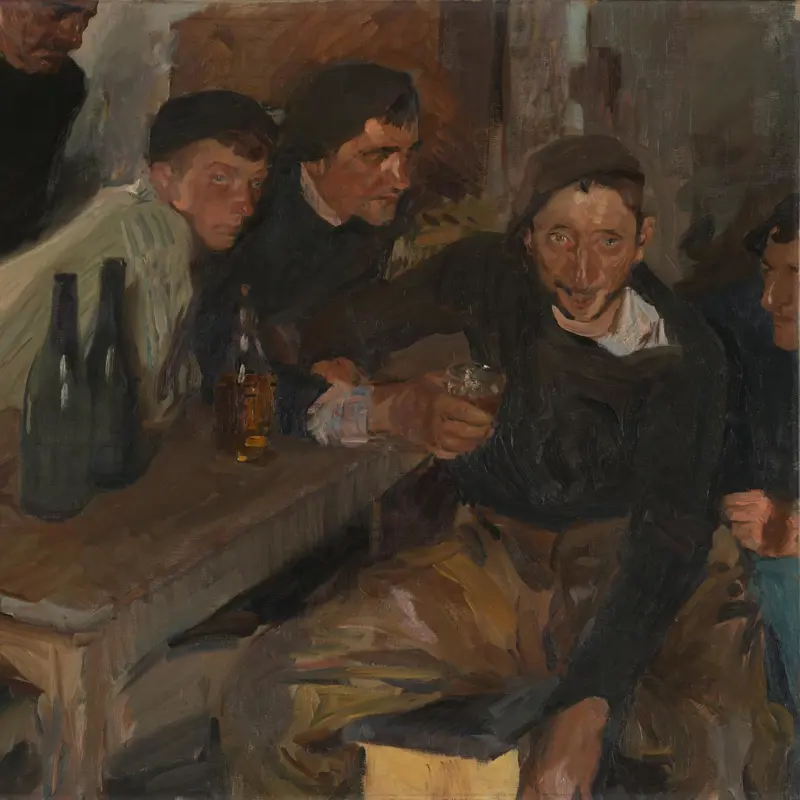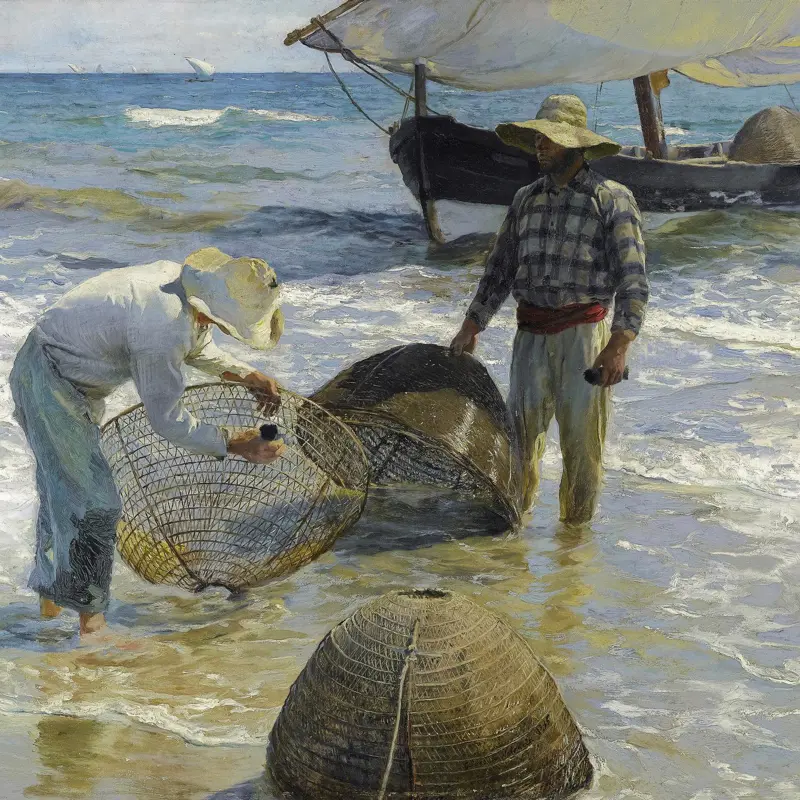Joaquín Sorolla y Bastida was a leading Spanish painter of the late nineteenth and early twentieth centuries. Born in Valencia in 1863 but orphaned as an infant, he was raised by an aunt who recognised and encouraged his precocious artistic talent. He was studying drawing by eleven, painting at the Academy in Valencia in his late teens, and soon exhibiting in Madrid. Not yet 21, his first large history painting was acquired by the Spanish government in 1884.
A prominent career in his homeland was predicted, but early on Sorolla determined on greater fame than that. He began to send large-scale, brilliantly colourful paintings on themes of Spanish peasant life and the problems confronting Spanish society to major exhibitions across Europe and the Americas – Buenos Aires, Chicago, Munich, Paris, Venice, Vienna – where invariably he won prestigious awards and sales to leading institutions. His first exhibition in London, in 1908 where he was advertised as The World’s Greatest Living Painter, disappointed, but an exhibition in New York the following year proved a staggering success. He was summoned to the White House to paint President Taft (Cincinnati, Taft Museum) and returned to Europe a wealthy man. A loving family awaited him in Madrid; in 1888 he had married Clotilde García del Castillo who was to be his muse and the subject of many of his pictures. They had three children who also play a prominent role in his work. By about 1910, and until another prodigy, Pablo Picasso, eclipsed him, Sorolla was the most famous Spanish artist in the world.
Sorolla painted in a broadly Impressionist style, showing particular talent in capturing the play of brilliant Spanish sunlight on water, often near his hometown of Valencia. His bravura handling of paint and sense of atmosphere in the fashionable beach scenes he began to execute in the 1890s won wide admiration, comparison with such contemporaries as Claude Monet and John Singer Sargent, and distinguished patrons. The most important of these was Archer Milton Huntington, the founder of the Hispanic Society of America in New York, who was the impresario of Sorolla’s American success. In about 1910 Huntington commissioned a vast cycle of paintings for the Society on the lives and customs of the Spanish peoples. Sorolla worked on The Vision of Spain relentlessly for the next ten or more years until felled by a stroke. The National Gallery’s The Drunkard, Zarauz was painted in 1910 as Sorolla prepared to take on Huntington’s daunting commission. With it, he returned to an engagement with Spanish peasant life where he began his career, and to the traditional palette of Spanish art with its expressive use of black, as in the paintings of Diego Velázquez and Francisco de Goya. Sorolla died in Madrid in 1923; he was given a state funeral. His reputation outside Spain declined in subsequent years but today he is the subject or renewed international admiration.


